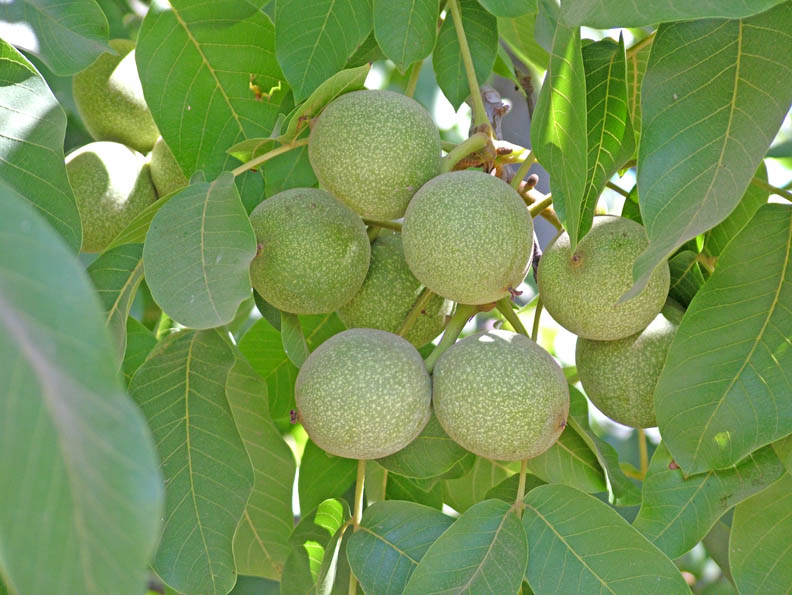
Aided by favorable growing conditions and some dense foliage that has helped limit sunburn damage, the Stanislaus County walnut crop around Hughson, Calif., was heading into August in fine shape, even if yields don’t match earlier expectations, according to grower Ron Martella.
He is a partner in two family walnut operations: Ronald Martella Farms, with 800 acres of orchards, and Grower Direct Nut Co., Inc., which buys, processes and sells walnuts. Both are based in Hughson.
“Around our area the orchards and overall crop quality look pretty good,” he says. “The trees have had great growth with good vigor. I’m not seeing a bumper crop by any means. Production looks to be close to normal, nothing spectacular”
The relatively short periods of hot weather up to now haven’t hurt the crop. The healthy condition of many orchards probably helped the trees withstand the heat, Martella notes. However, with the kernels starting to solidify, they’re more susceptible to sunburn, which can discolor the nut meats and reduce their market, he adds.
Some growers experienced an unusually large nut drop in some varieties, particularly Vina, earlier this year like they did in 2012. Martella says. However, crop losses don’t appear to be as high as last year. Then, Chandler as well as Vina were affected.
The first crop size forecast is due Sept. 5 when the USDA-NASS releases its objective measurement report. Many growers would like to see 2013 production levels similar 2012, Martella notes.
“All the foliage this year makes it difficult to tell how big the Chandler crop will be,” he says. “However, the Howard crop in this area looks very heavy, judging by the number of broken limbs. Some growers have been reporting their Tulares are a little light. But the ones in our family’s fields are looking pretty good.”
Until the industry gets a better idea of this year’s crop size, growers are hesitant to sell new-crop walnuts. They don’t want to miss out on higher prices should the harvested crop fall short of market demand.
“A lot of rumors about possible walnut prices fly around the industry at this point in the season,” says Martella. “But, I don’t think growers have any reason to complain about the prices that will, eventually, be established for this year’s crop.”
He hasn’t heard spider mite flare-ups in his area. Mites and navel orangeworm can cause late season problems. His trees received their second spray to control the second-generation of worms in the third week of July. That followed a May spray to treat the first flight of the moths this year. “We’ll continue to keep an eye on them for the rest of the season,” Martella says.
Water remains the key concern for Martella and his fellow growers.
“I can’t see growers continuing to pump water like we are now over the long run,” Martella says. “Unless we start getting some more wet years or more surface water storage capacity, water will be the limiting factor in our production down the road.”
This report is from Tree Nut Farm Press, a twice-monthly electronic newsletter published by Western Farm Press during the growing season. If you would like to receive Tree Nut Farm Press, see here for sign-up.
More from Western Farm Press
Agriculture waiting on Silicon Valley moment
Brad Kelley, the farm boy with 1 million acres
About the Author(s)
You May Also Like




